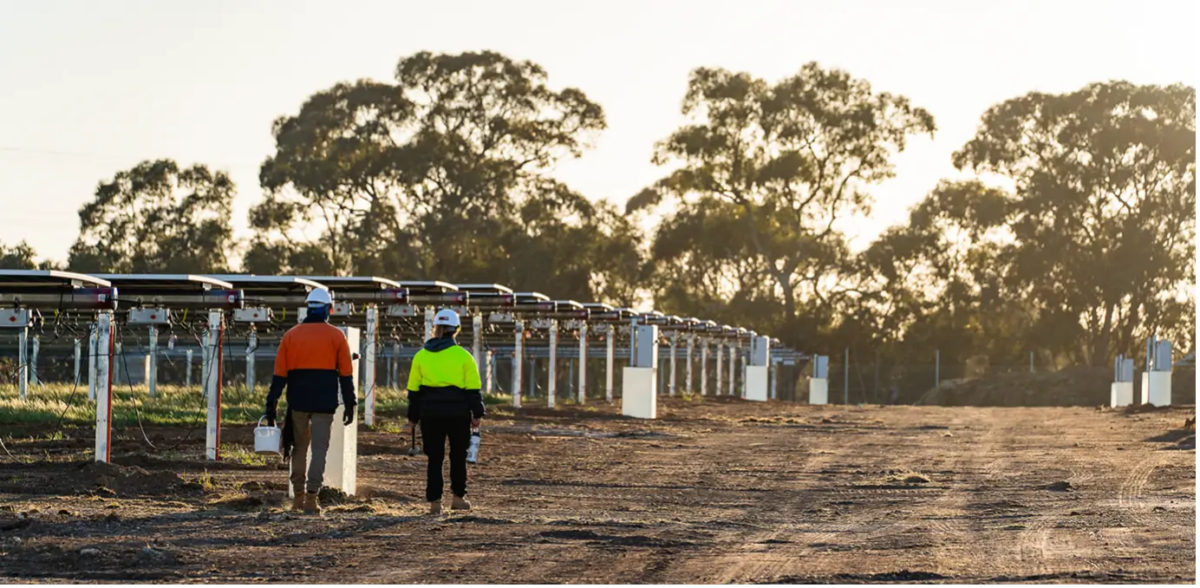Government policies have played a pivotal role in nurturing a robust renewable industry and green economy in Australia but as we race toward our 2030 decarbonisation targets, the optimisation of tendering processes for developers will emerge as the next priority in the coming year. Achieving clean energy targets cannot be done effectively without collaboration between the government, developers and investors.
Last year was marked by unprecedented investments and substantial renewable market share growth within the National Electricity Market (NEM).
The questions that now loom large are whether this trajectory can be sustained in 2024, and how we can refine our approach to procurement and financing to ensure a greener tomorrow. It’s commendable that we can now say that Australia is approaching the midway point of its goal to achieve 82% renewables by 2030.
In fact, renewable energy sources contributed almost 40% to the total electricity demand last year. It’s a testament to the collaborative efforts of small-scale solar, wind, and large-scale solar projects across the nation. The proportion of coal in the NEM has also plummeted from 86% to 59%, signalling a definitive shift that is set to accelerate in the coming year.
This decline is not merely a fleeting trend but a precursor to the transformative changes positioned to unfold. So much so, that the Australian Energy Market Operator (AEMO) paints an ambitious vision, that by 2050 Australia is expected to require a staggering ninefold increase in utility-scale solar and wind generating capacity compared to current levels.
Amidst this promising landscape, the role of EPC firms has become increasingly vital. As we find ourselves charting our course towards 2030 decarbonisation targets, the support and empowerment of EPCs are non-negotiable. These firms are and will continue to be the architects of our renewable future, tasked with bringing to life the infrastructure that will shape the energy landscape for decades to come.
Late last December, the New South Wales (NSW) government made a bold move, injecting a substantial $4.2 billion into wind, solar, and storage projects. State Energy Minister Penny Sharpe announced that this shift places NSW nearly halfway towards its targeted 12,000 MW of new wind and solar capacity, a crucial step in phasing out aging coal generators.
Considering the challenges posed by the delayed closure of the Eraring Power Plant Station, there is a compelling case for the NSW government to invest additional capital into developing green projects. Such proactive measures will not only accelerate the shift towards renewable energy but also address community concerns.
At the Commonwealth level, the National Reconstruction Fund and the Australian Renewable Energy Agency (ARENA) will play integral roles, offering substantial financial and technical resources. In the 2022-23 financial year, ARENA achieved record funding approvals, totalling $544.1 million for 60 projects valued at over $3.5 billion. The anticipation of an expansion of this financial support aligns well with the government’s redefined 2030 net-zero emissions targets.
Even with additional funding challenges remain and it’s important to point out that the first half of 2023 presented noteworthy challenges, with the slowest pace of final approvals for new wind and solar farms in the Clean Energy Council’s six-year tracking history.
Concerns arose about Australia’s ability to meet the ambitious 2030 decarbonisation targets, despite robust governmental support. This setback serves as a valuable lesson for the government to work toward streamlining and ensuring the consistency of tendering and project approval processes throughout 2024.
As we navigate the upcoming year, a pivotal factor in assessing governmental progress will be the efficacy of changes in processes and approval timelines—a crucial consideration to address challenges experienced in Q1 and Q2 of last year.
Fortunately, signs point towards a positive trend, such as the NSW government’s investment of $128 million into communities hosting transmission lines and power plants last year, along with a pledged additional $800 million to expedite the connection of regional energy projects to the grid.
The anticipated 2024-25 budget will also determine the specific green areas into which the government will channel its investment efforts. This strategic allocation of funds will not only impact the overall growth of the renewable energy sector but will also serve as a catalyst for states and territories to benefit from a positive trickle-down effect.
As we embark on the journey into 2024, the call to action is clear. Developers, including EPCs, must persist in expanding and innovating, collaborating closely with communities and the government. In return, the support and empowerment of EPCs through government funding are no longer a nice to have, but rather a must have. 2024 will also be a year where the effectiveness of schemes and the prudent allocation of funds will face scrutiny.
Learning from the experiences of 2023, both governments and developers must engage in more meaningful conversations, allocate additional funding, and prioritise streamlined processes with nimble approval timelines.
Author: Brenton Moratto, co-founder, ACLE Services
The views and opinions expressed in this article are the author’s own, and do not necessarily reflect those held by pv magazine.
This content is protected by copyright and may not be reused. If you want to cooperate with us and would like to reuse some of our content, please contact: editors@pv-magazine.com.








By submitting this form you agree to pv magazine using your data for the purposes of publishing your comment.
Your personal data will only be disclosed or otherwise transmitted to third parties for the purposes of spam filtering or if this is necessary for technical maintenance of the website. Any other transfer to third parties will not take place unless this is justified on the basis of applicable data protection regulations or if pv magazine is legally obliged to do so.
You may revoke this consent at any time with effect for the future, in which case your personal data will be deleted immediately. Otherwise, your data will be deleted if pv magazine has processed your request or the purpose of data storage is fulfilled.
Further information on data privacy can be found in our Data Protection Policy.